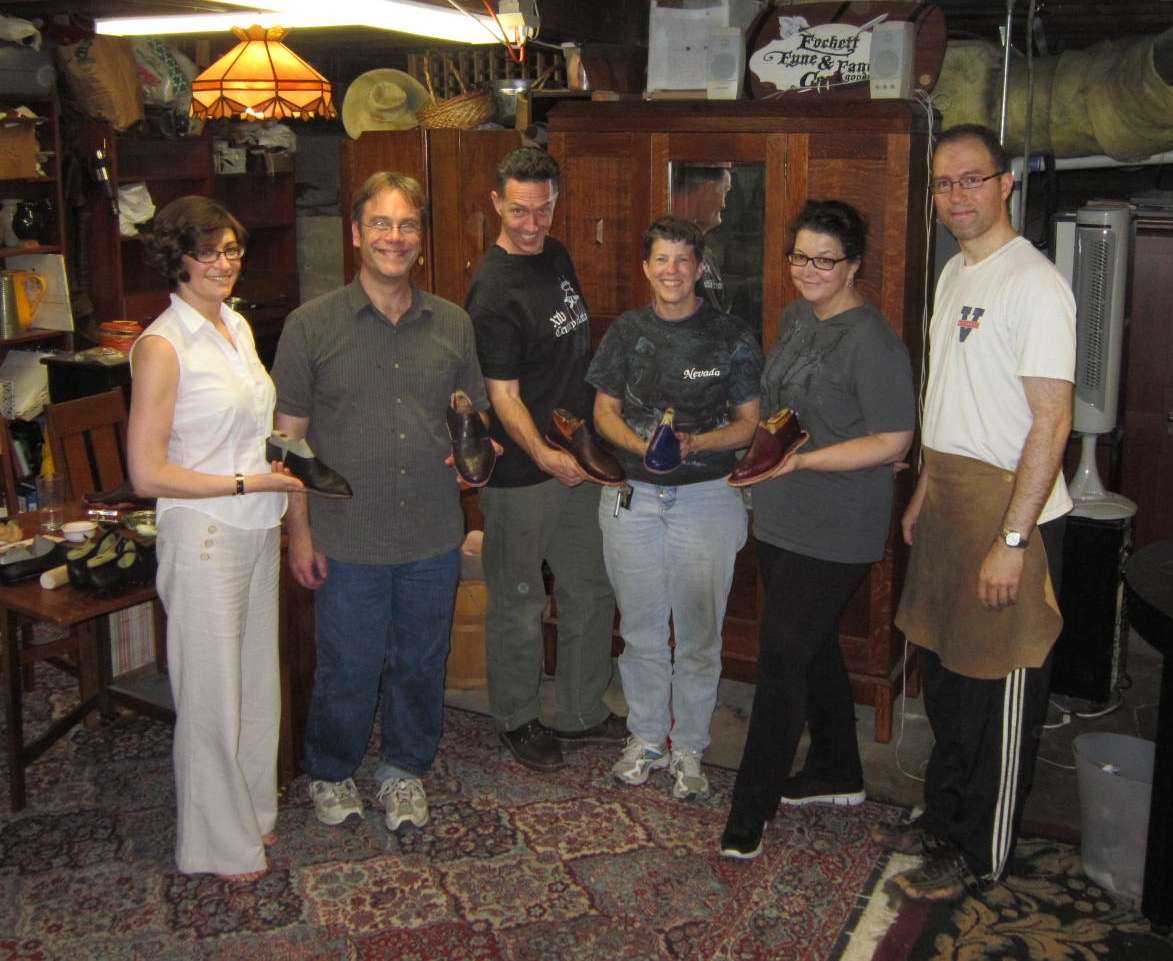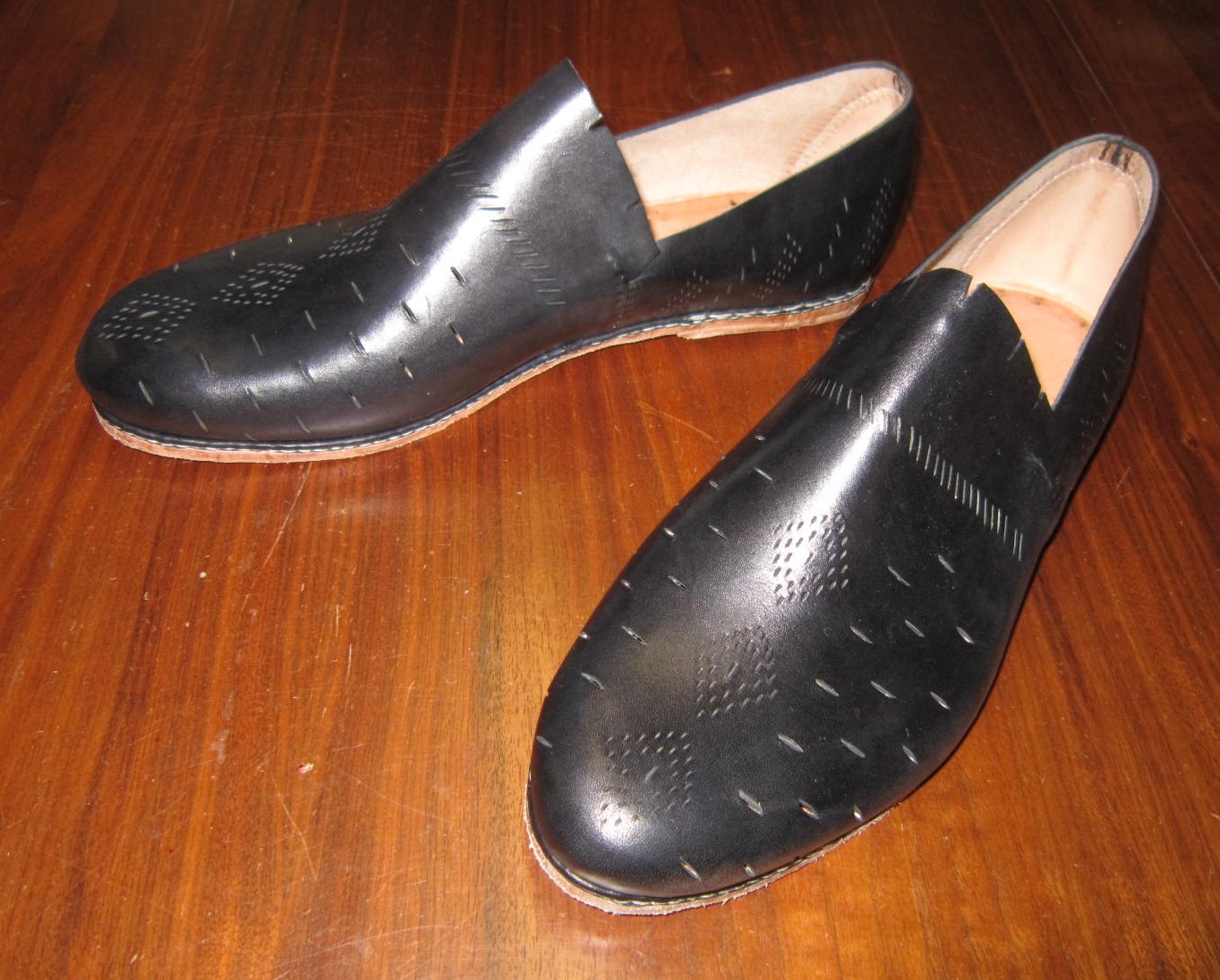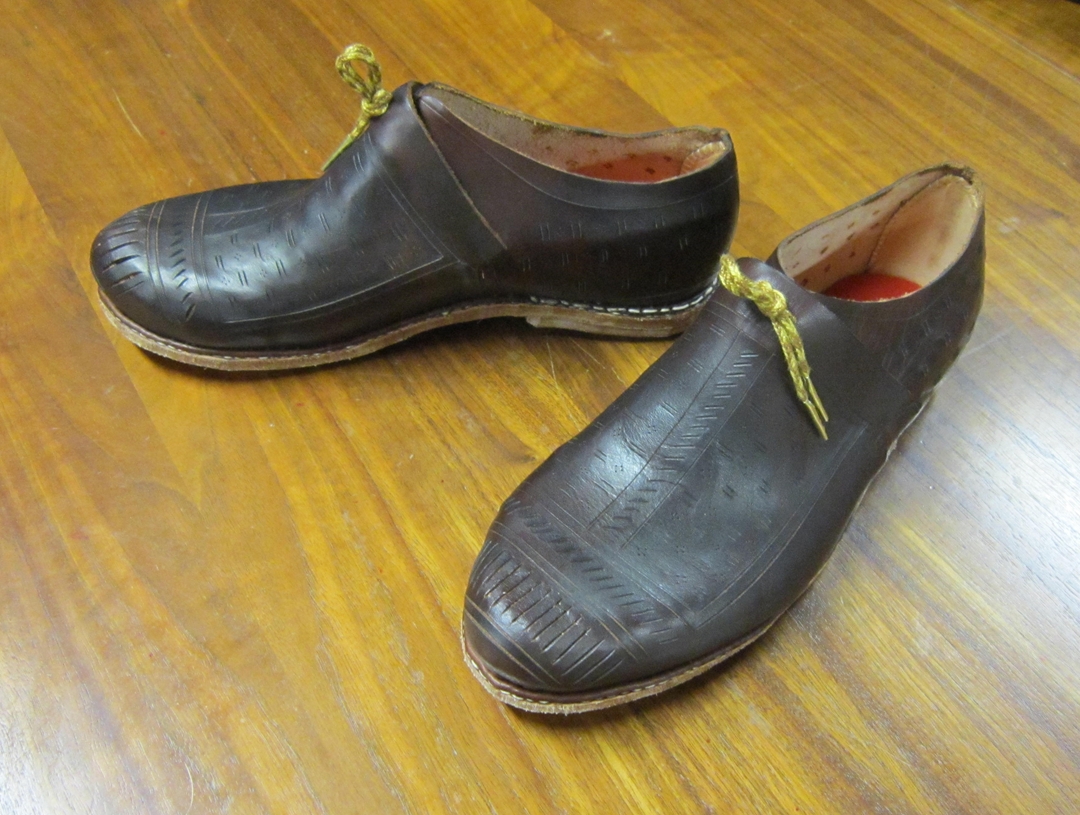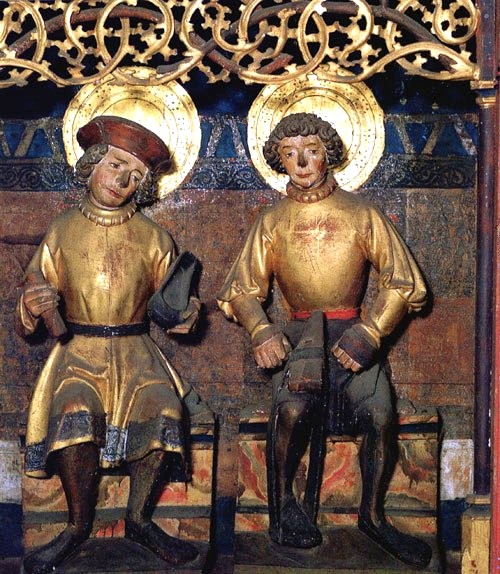In the past two weekends, I hosted a three-day Renaissance Shoemaking workshop. I had both beginners who had never held an awl before as well as some who had made a few pairs of shoes already. In general, I think the class was an excellent success. The students all learned a great deal, and I even came away with some improvements in my technique. Here is a shot of everyone with one of their finished shoes.

We started the workshop off by choosing appropriate lasts and modifying them to fit each student’s feet.
Continue reading Renaissance Shoemaking Workshop – 2013 →
Based on a 1590s pair of shoes found in a Dutch shipwreck (Dutch SO-1 shipwreck, wrecked off the island of Texel in the Wadden Sea on Christmas Eve in 1593), I used the slashing pattern and a 1570s pattern to make this newest image. You can see both the original and my work below. I clarified the lozenges on the vamp to make them distinct, and the quarters do not cut away in the center like the extant pieces do. I also cut some vamp tabs for a touch more decoration. Single heel lift on these – one thing I did notice is that I need to burnish both after the outsoling is done (when the outsole is wet) to flatten it out, and then after it is dry, to give it a sheen. I have also started to burnish the sole of the shoe to give it a bit of a shine as well.


This pair was constructed with more tooling on the vamp based on a pattern in Goubitz, and with straps intended to fall underneath it. Unfortunately, the top of the pattern was cut straight across for the opening rather than curved, which did not completely hide the straps. I’ve since adjusted the pattern to make sure that this does not happen again! Still, I do enjoy the cutwork pattern. The fingerloop laces can be tied outside of the shoe or on the inside of the shoe – both are documentable. In fact, in some shoes do not even have holes in the vamp for the laces – one would tie the straps down underneath it.

As part of shoemaking, when closing an upper or inseaming, one has to pull two ends of your stitching cord tight. Many of the illustrations show a shoemaker in the process of swinging their arms out to pull their stitches tight. But, as you might imagine, this repeated action of pulling tightly on stitching cords against bare skin can wear down the skin, causing blisters and cuts. The palm, or hand leather, is typically worn on the left hand and is used protect the shoemaker from the constant stress of tugging stitches tight. In this 16th Century German sculpture of St. Crispin and St. Crispianus, altar figures from the shoemaker’s altar in the Marien Church in Delitzsch, a palm is visible on the left hand (what may look like a narrow palm on the right is actually the cuff of the sleeve).

Interestingly enough, evidence for hand leathers in the medieval arena is somewhat scant.
Continue reading Hand Leathers, aka Palms →
Dedicated to the Research and Construction of Chopines, Pantoufles, Zoccoli, Shoes, Boots,and Other Raised and High Heels.




